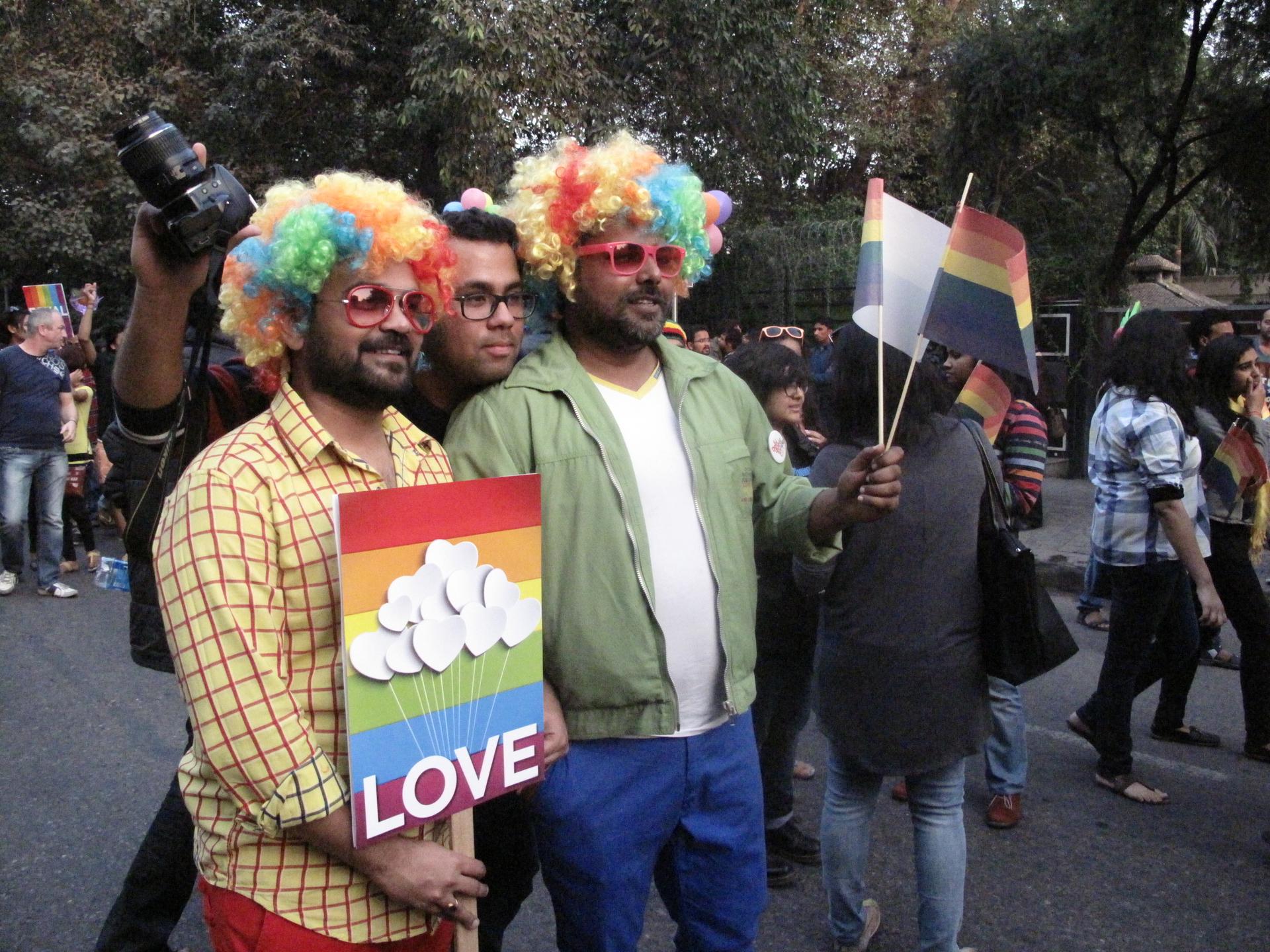Delhi’s LGBT Pride parade shows what a difference a decade can make in India
Many participants in Delhi’s LGBT Pride parade carried placards saying “Love,” “Equal” and “Accept.”
Growing up in India, I didn’t know a single openly gay person. I've since heard, from Indian gay friends I met living abroad and a friend who came out years later, just how lonely and difficult it was to grow up gay in India.
One acquaintance in the US told me he missed India, and the only reason he wouldn't move back is because he might have to go back in the closet.
But watching hundreds of gay, lesbian, bisexual and transgender people march in New Delhi’s streets for the 2013 Queer Pride Parade on Sunday, I realized just how much has changed in the 11 years that I was away — and also, what hasn’t.
Back then, I could not have imagined people from the LGBT community marching in the streets, announcing and celebrating their identity. Even the possibility that someone you knew might be gay was talked about in hushed voices.
Yet, here were hundreds of people who identified as queer walking hand in hand, alongside their straight friends and colleagues, chanting slogans demanding their rights, asking for acceptance. And this for the sixth year.
It was the happiest group of people I've seen since moving to New Delhi. Festive drum beats echoed everywhere, rising above the occasional chanting of slogans. And the drummers were surrounded by small groups of people dancing, as though at a wedding celebration. You could call it a carnival, or a block party, on the move.
I’ll admit I’d only seen one other gay pride parade before this, in the US. But that was so long ago, I didn’t even remember much to make a fair comparison.
So I asked Aditya Advani, age 50 and a participant in the parade, who had moved back to New Delhi after decades of living in the US.
“Parades in the West are larger and more organized,” he said. “But this one is more intimate and nice. People know each other. There’s a real fiery spirit here.”
Advani says he was struck by the fact that some 80 percent of the people in the parade were in their 20s. A lot of them, he says, may not have come out to their families, “but they can be out with their friends here and dance on the streets. It’s a very positive thing.”
And yet, I couldn't help notice that the vast majority of the younger participants in the parade were wearing masks. And once I started talking to the younger people, and asked if they were willing to be interviewed on tape or be photographed, I realized the masks weren’t just for decoration.
Only then did it strike me that, despite a lot of progress made by the gay rights movement in India, there may still be a long way to go.
A 22-year-old man, who didn’t want to be identified by name, told me he had come out to his family, but they had given him strict orders not to make his sexuality a matter of public knowledge. Another young woman, attending the parade for the third time, told me she didn't want to be quoted on anything. And many young people weren’t willing to be photographed, even with their masks on.
Still, they seemed comfortable with their identity and sexuality, at least within their group of friends. I realize this is true perhaps only in New Delhi and a few other cities in India, but even that seems like a long way to have come in merely a decade.
Every day, reporters and producers at The World are hard at work bringing you human-centered news from across the globe. But we can’t do it without you. We need your support to ensure we can continue this work for another year.
Make a gift today, and you’ll help us unlock a matching gift of $67,000!
